This is Candela Freyr.
Reimagining coastal accessibility
Accessing the rural coastline in Norway is most easily done with a boat. Owning one therefore becomes the luxury of accessibility to these unique places – for the few. These places should be possible for more people to enjoy. This concept seeks to explore this potential: making the next generation of coastal accessibility for 2035 – A service of shared autonomous mobility that enable more inclusive experience for people to access coastal areas in a sustainable way. With new technologies and a developing culture for shared mobility, Candela Freyr seeks to make the rural coastline more fair for people to access, while promoting the use of public transport in coastal cities. The pilot project in this concept exploring how we can get from the city center of Larvik out to the rural coastline.
Growing up by the coast in Norway, the author have always had a close bond with the sea and the coastal nature – always having had the opportunity to explore the archipelago with their boat. That close bond faded when they sold their boat. All of a suddenly they could understand why so few of their friends never explored the coastline they have in their region - because the effort getting there on land is way greater than on sea. Owning a boat is providing a luxury of ‘accessibility’. The Norwegian coastline is a charming place where lifestyles meet - the ones out exploring, the campers and the “sun-bathers”, the ones on vacation and the ones who simply want to disconnect for a short while. However, this is made exclusive to the ones who can reach it - most simply done with a boat. This project aims to give more people access to reach the rural coastline and create a stronger bond to the nature they have so close by but yet to access in an easy matter. Envisioned for 2035, this new ocean-based mobility service seeks to make public transportation on water more prominent. By connecting the service with already existing land-based public transport, it seeks to make shared mobility a better alternative in smaller coastal cities in Norway. Possible to operate in a variety of ways based on an adaptive transit design system, the autonomous system seeks to enhance the future of shared mobility on water.
From researching developing technologies and meetings with industry experts in combination with the extensive research and interviews the design process explored what such a mobility service might look like. By following maritime transport restrictions to extrapolating information from interviews the framing for the development was for a 12-passenger catamaran – considering passengers comfort and trust in such a service. Aligned with the creative development, the business model has been of support to make such a concept feasible in the sense of how it is visioned to operate. As for reference throughout the process, one specific region was selected as a “pilot-project”, and with it creating a variety of scenarios users might utilize the service to be able to analyse the user needs. Drawing inspiration from nature, the development from hand-sketches shaped a vision to be further developed in a 3D model in Rhino. Upon finalization of the 3D model, the exterior was design around the interior space to fully optimize the space – both developed to be simple yet functional designs. Respecting the environment it moves in has been a great focus and was wished to be reflected in the design, by giving an interactive experience for the passengers onboard and for the exterior by nearly mirroring the environments it moves in. The final concept was in the end of the project built into a 1:12 physical scale model.
The final result is Candela Freyr, a concept for a service of shared autonomous mobility that enable more inclusive experience for people to access coastal areas in a sustainable way. Meant to merge with existing land-based transportation, its affordable and easily accessible. With hydrofoils, Freyr flies over the waves, making for a comfortable ride for the passengers and with the advanced wave sensors and autonomous system, mirroring this information through visuals for the passengers aboard – providing trust and comfort along the way. It’s minimal in its design yet carries the necessary functions needed, most prominent the bow-bumper: making contact with land soft and safe, and the radar mast: working as a means of communicating its self-piloting capabilities. The interior is meant to facilitate space for passengers to bring whatever they wish to bring along and leave that in a secure manner before entering the seating area. As mentioned above, advanced technologies are reflected in the interior, exposing the hydrofoil stems, mirroring the motion of the surrounding waves and giving a live view of what the autonomous system sees. The overarching result for this concept is a service made to make accessibility to the rural coastline equal for all citizens living in the region.
Iver Alexey Zaitzow Mikaelsen
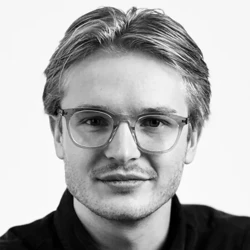
In collaboration with:
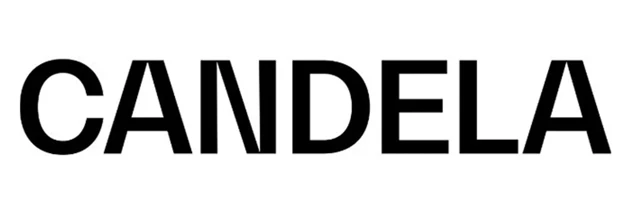
UID25 | Iver Alexei Zaitzow Mikaelsen – Grad project presentation
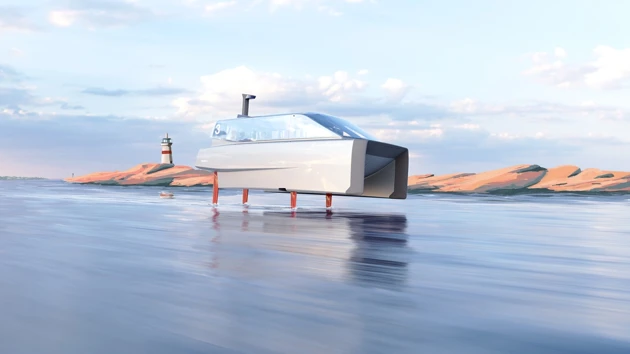

Sketch development for interior and exterior design.
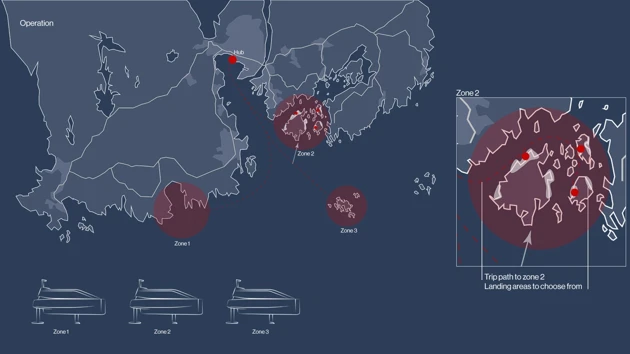
Service operation to three different zones.

: Interior communication between passengers and autonomous system.
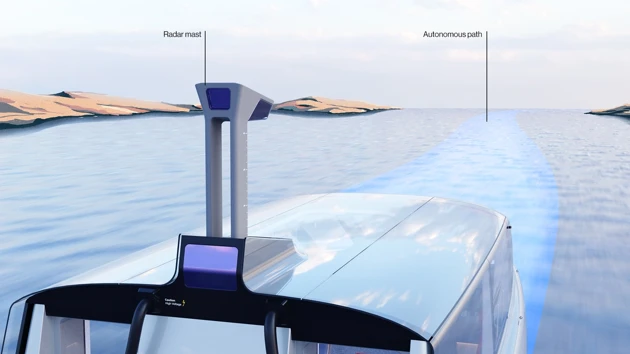
Autonomous travel.

Passengers interacting with the information screen, looking at where they are travelling to.

Remote docking, passengers deboarding.
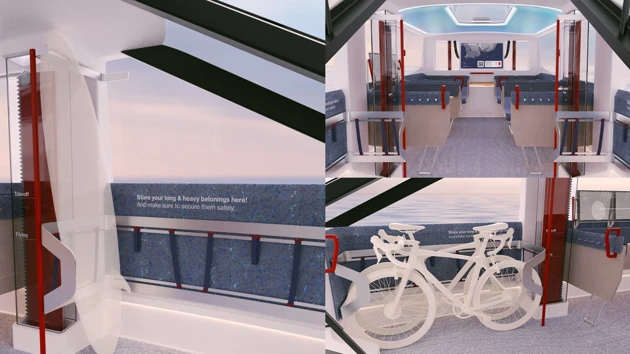
Interior space: storage area should make it possible to bring whatever passengers wish for.
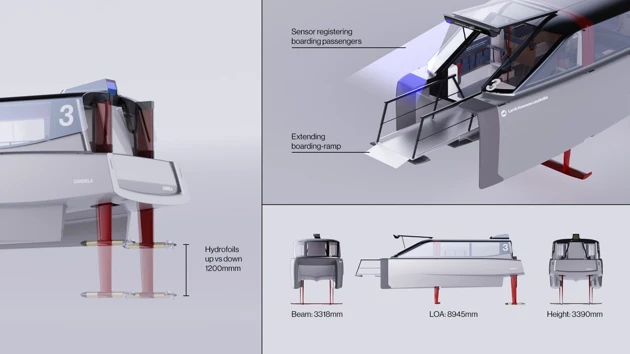
Technical information.










